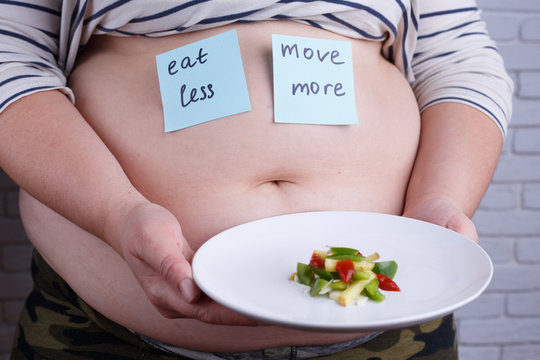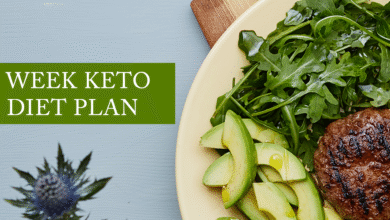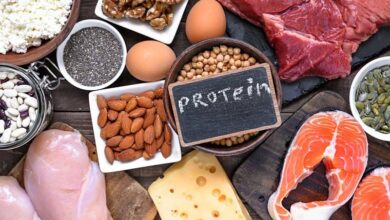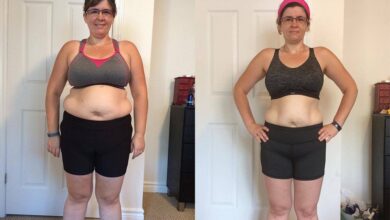Weight Loss Myths That Are Stopping You from Losing Fat: Busting Lies, Finding Truth, and Achieving Real Results

If you’ve ever tried to lose weight, chances are you’ve come across dozens of so-called “rules” about what works and what doesn’t. Friends tell you carbs are the enemy. Social media influencers push detox teas. The truth is, many of these ideas are nothing more than weight loss myths that confuse and sabotage your journey. Across Africa, the United States, and Europe, millions of people are wasting time and money following bad advice instead of focusing on strategies that actually work. What makes these myths so dangerous is how convincing they sound. They use scientific jargon, celebrity endorsements, or anecdotal success stories to trap you. But lasting fat loss doesn’t come from shortcuts or extremes—it comes from consistency, balance, and evidence-based practices. This article will uncover the top myths stopping you from losing fat and show you the proven truths that actually deliver results.
Read Also How to Prevent Hair Loss During Weight Loss: Proven Tips for Healthy Growth
Why Weight Loss Myths Are So Dangerous
At first glance, a weight loss myth might seem harmless. After all, what’s the harm in believing that eating late at night causes weight gain or that fat-free foods are always better? But when you dig deeper, you realize these myths have a hidden cost. They push you toward unsustainable habits that hurt your metabolism, energy, and mental health. For example, starving yourself by skipping meals may seem like a quick way to create a calorie deficit. In reality, it slows down your metabolism, increases cravings, and sets you up for binge eating. Likewise, following crash diets that cut out entire food groups can lead to nutrient deficiencies and long-term health problems. Myths also drain your wallet—whether it’s expensive detox teas, “miracle” pills, or overpriced weight loss programs USA consumers spend billions yearly on, only to end up frustrated. What’s worse, myths steal your motivation.
The Most Common Weight Loss Myths You Must Stop Believing
Let’s break down the biggest myths that are holding people back worldwide.
@Carbs Make You Fat
Carbohydrates have been villainized for decades, but the truth is, carbs don’t inherently make you fat. Your body needs carbs for energy, brain function, and even muscle recovery. What matters is the type of carbs you eat and the portion sizes. Refined carbs like white bread, sugary sodas, and pastries spike your blood sugar, leading to cravings and overeating. On the other hand, complex carbs—like brown rice, oats, beans, and sweet potatoes—release energy slowly, keep you full longer, and support your workouts. Cutting carbs entirely can make you feel tired, cranky, and deprived, leading to unsustainable dieting. Countries across Africa rely heavily on carbs like rice, yam, and maize, while in the USA and Europe, whole grains and legumes form a big part of balanced diets. The key is moderation and pairing carbs with protein and healthy fats.
@Skipping Meals Boosts Fat Loss
Many people believe that skipping meals, especially breakfast, helps cut calories and accelerates weight loss. But science says otherwise. When you skip meals, your body goes into “energy preservation mode.” Your metabolism slows down, making it harder to burn fat. Skipping meals also increases hunger hormones, leading you to overeat later in the day. That’s why many people who skip breakfast end up binging at lunch or dinner. While intermittent fasting can be effective for some, it’s not about skipping meals randomly—it’s about eating within structured windows while still getting proper nutrition. In Africa, traditional eating patterns often include heavy evening meals, while in the USA and Europe, breakfast is marketed as “the most important meal of the day.” The reality is balance matters more than timing.
@You Must Eat Small Meals Every 2 Hours
You’ve probably heard this advice: “Eat six small meals a day to keep your metabolism running.” Sounds logical, right? Unfortunately, it’s a myth. Your metabolism doesn’t speed up simply because you’re eating frequently. What matters most is the total calories you consume and the quality of your food. Whether you eat three big meals or six small ones, your calorie burn will be nearly the same. The “grazing” approach may work for some people, especially those with active jobs, but for many, it leads to constant snacking and overeating. In fact, studies show that fewer, larger meals may actually help control hunger better. People in Europe and Africa often eat fewer but more substantial meals, while in the USA, the snacking culture has created constant eating patterns that contribute to obesity. Instead of obsessing over meal frequency, focus on what works best for your lifestyle.
@Fat-Free Foods Are Always Better
The diet industry has made billions convincing people that fat-free means healthy. But here’s the catch: when manufacturers remove fat, they often replace it with sugar, refined carbs, or artificial additives to improve taste. That means fat-free yogurt, salad dressings, or cookies may actually contain more calories than the full-fat versions. Healthy fats—like those found in avocados, nuts, olive oil, and fatty fish—are essential for hormone regulation, brain health, and fat loss. Cutting them out completely can disrupt your body’s ability to burn fat. In Africa, foods like groundnuts, palm oil, and coconut provide natural fats, while in Europe and the USA, olive oil and salmon are staples in healthy diets. Instead of avoiding fat, choose the right kinds. Replace processed, trans-fat-laden junk with whole, nutrient-dense sources of fat. Your body needs it, and so does your weight loss journey.
@Sweating Means You’re Burning More Fat
Many people associate sweat with fat burning. The more you sweat, the more weight you’re losing—right? Wrong. Sweat is simply your body’s way of cooling down. While sweating can indicate intense effort, it’s not a direct measure of fat loss. You could sit in a sauna for an hour, sweat buckets, and still not burn significant fat. That’s just water weight, which comes back once you rehydrate. On the other hand, effective fat-burning workouts like high-intensity interval training (HIIT) or resistance training don’t always make you sweat heavily, but they torch calories during and after the session. In Africa’s hot climate, people may sweat more during simple activities compared to someone in Europe or the USA with cooler conditions, but that doesn’t mean they’re burning more fat. Focus on consistency and effort, not sweat. Track progress by body composition and strength, not the puddle on your shirt.
@Weight Loss Pills Work Like Magic
From “fat burners” to appetite suppressants, weight loss pills are marketed as miracle solutions. But the reality is disappointing—and often dangerous. Most over-the-counter pills are ineffective, unregulated, and filled with stimulants that can cause heart problems, anxiety, and digestive issues. Prescription medications can help in extreme cases, but they must be monitored by doctors and paired with lifestyle changes. In the USA, the diet pill industry is worth billions, yet obesity rates remain high. In Africa and Europe, herbal weight loss teas and “natural” supplements are aggressively marketed, often without scientific proof. The harsh truth? No pill can replace a calorie deficit, proper nutrition, and regular exercise. Relying on pills not only wastes money but also creates false hope. Instead, invest in proven methods—healthy food, structured weight loss programs USA, fitness coaching, or meal planning services—that create sustainable results without harming your body.
@You Can Spot-Reduce Fat
Want slimmer thighs? More defined abs? Smaller arms? Many people believe they can “target” fat loss by doing endless sit-ups, leg raises, or arm exercises. Unfortunately, spot reduction is one of the biggest weight loss myths. When you lose fat, your body decides where it comes from, based largely on genetics and hormones. That’s why some people notice belly fat shrinking first, while others lose fat from their face or arms. The only way to reveal muscle definition is through overall fat loss, which comes from a calorie deficit and full-body training. Across Africa, the USA, and Europe, gym-goers still waste hours on isolated exercises, hoping for spot reduction. Instead, focus on compound movements—squats, deadlifts, push-ups—that burn more calories and build strength everywhere. Combine strength training with cardio and you’ll achieve the toned look you want.
@Crash Diets Are the Fastest Way to Lose Weight
We live in a world obsessed with quick fixes. Crash diets promise rapid results—sometimes 10 pounds in a week. But what they don’t tell you is that most of that weight is water, not fat. Worse, crash dieting forces your body into starvation mode, slowing your metabolism and causing nutrient deficiencies. In the USA, crash diets like juice cleanses or cabbage soup diets are popular. In Africa, people turn to extreme fasting or herbal concoctions. In Europe, detox retreats are marketed as fat-loss miracles. But none of these approaches work long term. Sustainable fat loss comes from a moderate calorie deficit, balanced meals, and consistent exercise. Aiming for 1–2 pounds per week may sound slow, but it’s the approach that keeps the weight off for good. Remember: slow and steady wins the fat-loss race.
@Lifting Weights Makes Women Bulk Up
One of the most persistent myths—especially among women—is that lifting weights will make them bulky like bodybuilders. But here’s the truth: building massive muscles requires years of training, specific diets, and, in many cases, steroids. Women simply don’t have enough testosterone to bulk up naturally. What strength training actually does is build lean muscle, which increases metabolism, tones the body, and burns more calories even at rest. In Africa, women often avoid gyms due to this myth. In the USA and Europe, female fitness influencers are working hard to debunk it, showing how weightlifting creates strong, lean, and feminine physiques. The reality? If you want a sculpted waistline, toned arms, or shapely legs, strength training is your best friend. Combine it with cardio for balanced results. Instead of avoiding weights, embrace them—they’re one of the most powerful fat-loss tools available.
@Only Cardio Burns Fat
Cardio has long been considered the gold standard for fat loss. Running, cycling, or swimming can definitely burn calories, but here’s the catch: cardio alone won’t maximize fat loss. Resistance training builds muscle, which increases your resting metabolic rate, meaning you burn more calories even while sitting. HIIT combines cardio and strength, creating an “afterburn” effect that keeps your metabolism elevated for hours. People who only do cardio may lose weight, but they often end up with a “skinny fat” look—lighter on the scale but still soft around the midsection. In Africa, cardio often comes in the form of outdoor running or sports, while in the USA and Europe, gym treadmills dominate. The best approach is a mix: use cardio to improve heart health and burn calories, but pair it with strength training to reshape your body and sustain fat loss long term.
@Healthy Eating Costs Too Much
One excuse many people give is that eating healthy is expensive. While it’s true that organic foods or premium diet products can cost a lot, eating healthy doesn’t have to break the bank. In fact, whole foods like beans, lentils, eggs, rice, oats, and seasonal vegetables are affordable staples across Africa, the USA, and Europe. Meal prepping and bulk buying reduce costs further. Compare that to constantly buying takeout, processed snacks, or sugary drinks—they add up quickly. Research shows that people often overspend on unhealthy convenience foods while assuming healthy eating is costly. With proper planning, you can create nutrient-dense meals on a budget. Local African markets offer cheap, fresh produce; in the USA, budget-friendly chains sell frozen veggies; in Europe, discount grocers carry whole-grain staples. The truth? Eating healthy is about smart choices, not endless spending.
@Late-Night Eating Always Causes Weight Gain
“Don’t eat after 7 p.m. or you’ll gain weight.” This advice has been repeated so often that people accept it as fact. But science says otherwise. What matters most is not when you eat but how many calories you consume overall. If your daily intake puts you in a calorie deficit, you can eat at 10 p.m. and still lose weight. The myth probably arose because late-night eaters tend to snack on high-calorie junk like chips or ice cream. If your late-night meal is balanced—say, grilled chicken with vegetables—it won’t magically turn into fat. Shift workers in Africa, the USA, and Europe eat at odd hours yet still manage their weight with proper planning. Focus on what you eat, not just when. However, avoid overeating late at night, as it may disrupt sleep quality, which indirectly affects weight loss.
@Detox Teas and Cleanses Burn Fat
If you’ve been on Instagram, you’ve seen influencers promoting detox teas promising to flatten your belly. But these teas are nothing more than laxatives or diuretics—they flush water and waste, not fat. That temporary “slim look” disappears once you hydrate. Your liver and kidneys are natural detox machines; you don’t need overpriced teas to do their job. In Africa, herbal teas are marketed as slimming solutions. In the USA, detox juice cleanses are trendy. In Europe, wellness retreats charge thousands for “detox programs.” But none of these truly burn fat. Instead of falling for scams, focus on eating fiber-rich foods, drinking water, and exercising regularly. Those are the real “detox” methods your body needs. Don’t waste money on detox products; invest in real food and proven fitness programs.
@BMI Tells the Full Story
BMI (Body Mass Index) is often used to classify people as underweight, normal, overweight, or obese. But it’s a flawed measurement because it doesn’t distinguish between fat and muscle. For example, an athlete with high muscle mass may have a BMI that classifies them as overweight, even if their body fat is low. On the flip side, someone with little muscle and high fat may fall into the “normal” category. Across Africa, the USA, and Europe, reliance on BMI has led to confusion and misdiagnosis. Better measurements include body fat percentage, waist-to-hip ratio, and visceral fat levels. These provide a clearer picture of health risks. BMI can be a starting point, but it shouldn’t be the final word on your health or weight loss progress.
@You Have to Cut Out All Your Favorite Foods
Many people believe that losing weight means saying goodbye to pizza, chocolate, or traditional cultural dishes forever. But that’s not true. Restricting yourself too much often leads to cravings, bingeing, and eventual failure. The key is moderation. Flexible dieting approaches—like the 80/20 rule—allow you to enjoy favorite foods occasionally while staying on track. In Africa, cutting out cultural staples like jollof rice or ugali is unrealistic. In the USA, avoiding pizza or burgers forever isn’t sustainable. In Europe, saying no to pastries or pasta is nearly impossible. Instead of banning foods, learn portion control and balance. When you enjoy treats mindfully and maintain a calorie deficit, you can still lose fat without feeling deprived.
Evidence-Based Weight Loss Tips That Actually Work
Instead of chasing myths, focus on what science consistently shows:
- Create a Calorie Deficit: Eat fewer calories than you burn.
- Prioritize Protein: Protein builds muscle, keeps you full, and boosts metabolism.
- Stay Active: Combine cardio, strength training, and daily movement.
- Get Enough Sleep: Poor sleep disrupts hunger hormones and increases fat storage.
- Stay Hydrated: Water supports metabolism and prevents mistaking thirst for hunger.
- Manage Stress: Chronic stress triggers overeating and fat storage.
- Be Consistent: Sustainable habits beat extreme diets every time.
Whether you’re in Africa, the USA, or Europe, these fundamentals apply everywhere.
Conclusion
Weight loss is not about gimmicks or extreme sacrifices—it’s about applying truths, not myths. By letting go of lies like “carbs make you fat” or “detox teas burn calories,” you reclaim your power. Real fat loss comes from evidence-based practices that you can sustain for life. Instead of chasing quick fixes, focus on small, consistent habits that move you forward. Progress may be slow, but it will be steady and permanent. The myths have held you back long enough—it’s time to take control with science, patience, and determination.
Read Also 8 Quick Weight Loss Strategies for Busy Lifestyles
FAQs
1. Do carbs really prevent weight loss?
No. Carbs fuel your body. Choosing whole carbs like oats, rice, and sweet potatoes supports fat loss when balanced with protein and fats.
2. Is cardio enough for fat loss?
Cardio helps, but combining it with resistance training maximizes calorie burn, muscle growth, and long-term metabolic health.
3. Are weight loss supplements safe?
Most are ineffective or risky. Stick to proven basics: calorie control, nutrition, sleep, and exercise. Always consult your doctor first.
4. Can I eat late at night and still lose fat?
Yes. What matters most is your daily calorie balance, not the exact time you
eat.
5. Why do I regain weight after dieting?
Crash diets slow metabolism and trigger rebound hunger. Sustainable lifestyle changes—not extreme diets—are the key to lasting results.




One Comment